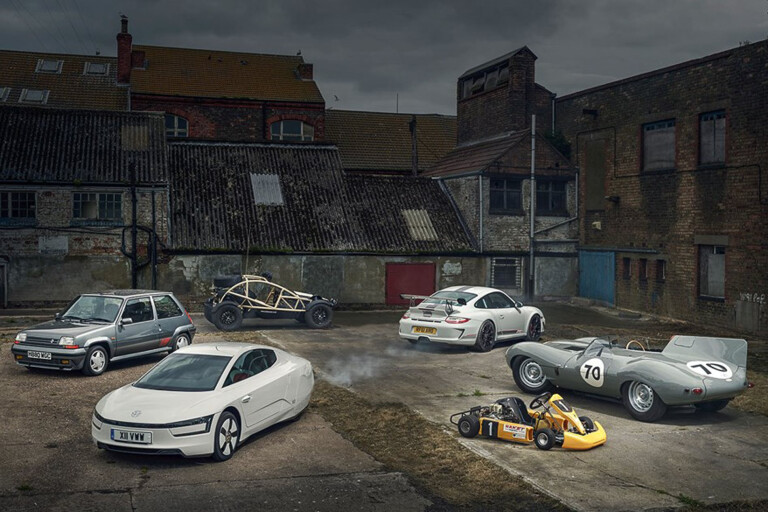
- Dream drives for the last litre of fuel
- Our writers select their final ever drive
- When oil runs dry, this is what we'll be in...
Back in the very, very olden days – like, in 2010 – car enthusiasts like you and me used to play a pub game, an idle conversation about what cars you would buy if you won a million dollars on the lottery. I remember, a million dollars was a lot back then and your imaginary garage could encompass a whole fleet of Ferraris, Lamborghinis and Porsches.
Now what does a million bucks get you? The front bumper off that Bugatti ‘Noire’? A Rolls-Royce wheel nut? The million-dollar garage game just isn’t the same when you find yourself saying, hands clasped as in prayer, ‘My dream would be a Honda Jazz and classic Ford Escort… I think I could afford those.’
And that’s not the only game that’s changed over the last decade. Remember speculating about what you’d drive if there was only one gallon of petrol left on Earth? Of course, back then the scenario was an apocalyptic future in which we’d run out of oil.
People used to write articles about ‘peak oil’ and the long decline that would follow. We imagined petrol getting more and more scarce until all the wells ran dry and then there would only be one litre left in the world – one litre in a little green jerry can, a stratospherically valuable object, guarded by armed security, coveted by the world’s millionaires like a Golden Ticket to Wonka’s Chocolate Factory.
And what would you drive, if you could burn that last litre? Ah, how the arguments would rage. An early 911 or a Caterham 7? Someone would always choose the Lamborghini Countach, even after it was pointed out they’d only do 12km before the gallon ran out. Still, I suppose it didn’t matter then, because the last gallon scenario was way off in the distant future, maybe 50 or 100 years hence. Oil wouldn’t run out in our lifetimes.
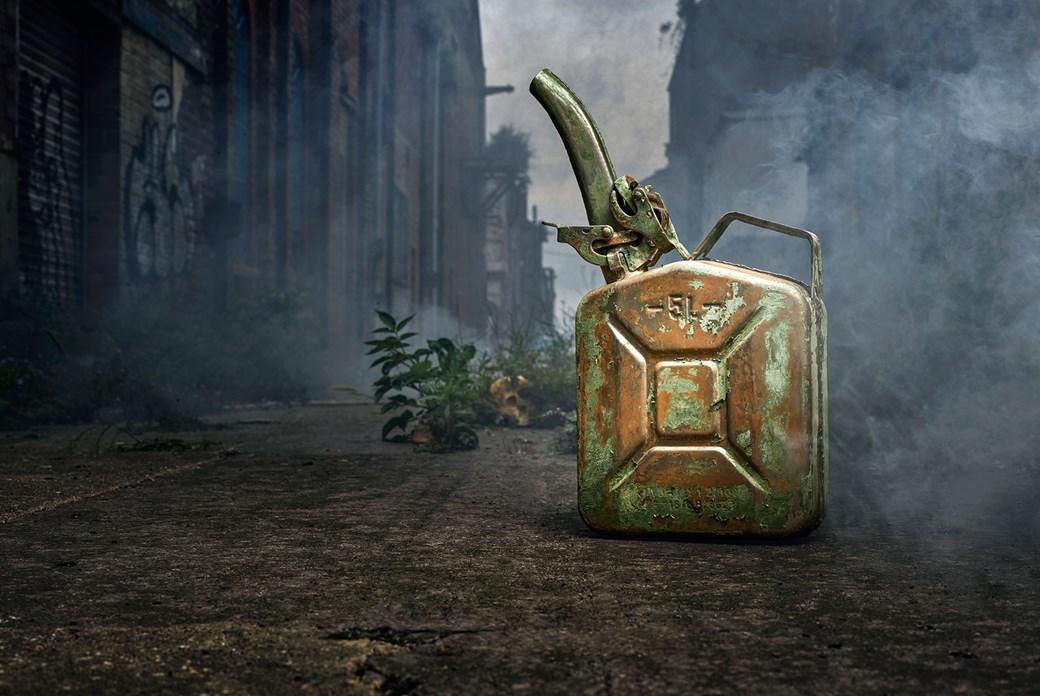
Well, we now know oil will never run out – and lots of it will be left in the ground. Yet paradoxically the last litre is coming faster than ever.
It isn’t going to unfold as we predicted. The momentum to replace fossil fuels is building, and all the car manufacturers are now racing to switch to electric power. As worldwide demand for petrol falls over the coming years, the economics of production could shift rapidly: refineries could close, driving the cost of fuel up further, making electric power all the more attractive, accelerating the revolution.
Before you know it, running a petrol engine in a public place – coughing those fumes in the faces of the little children – will be as socially unacceptable as smoking a pipe in a maternity ward. All those Ferraris will be sheeted over and stored, their fuel tanks bone dry, until in the end there’s just one, solitary litre left: one remaining puddle of this poisonous, carbon-emitting chemical in a little green jerry can – and no one will want it or care.
Except us. And then there’s the most important question of all: if you had the last litre on Earth, what would you drive? We asked six CAR magazine writers to choose their final drives, for that precious last litre of fuel. Read on to find out what they picked and why.
Sam Smith on the Jaguar D-Type
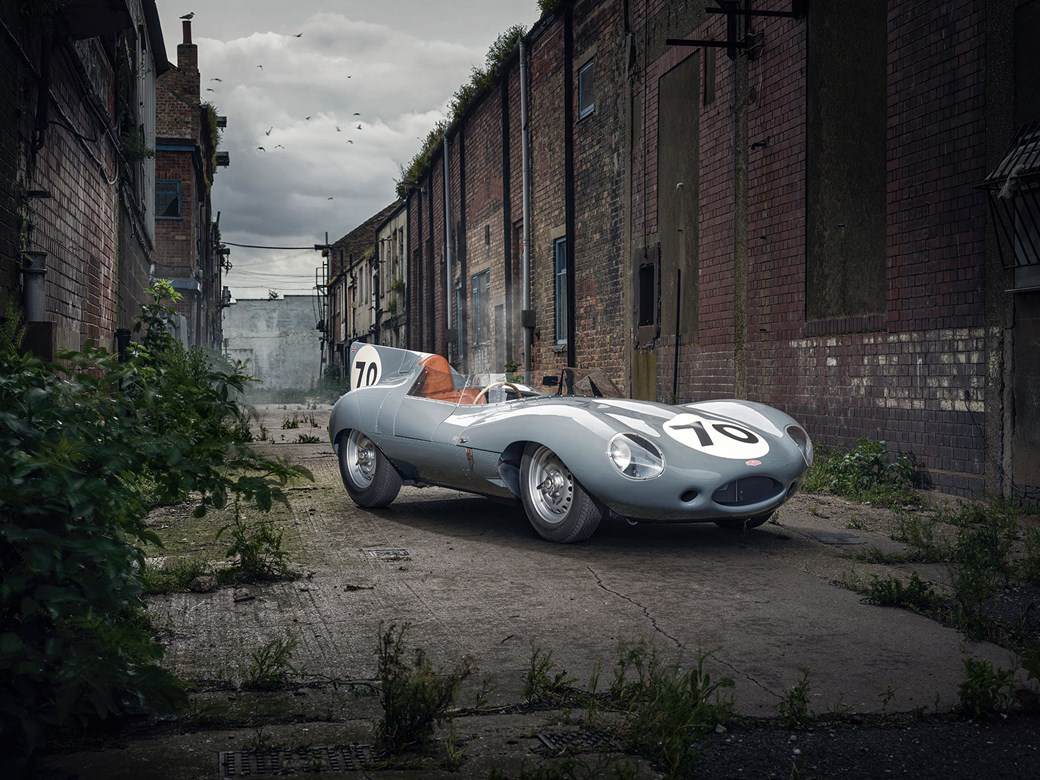
A car is basically a conduit for moments. Designing an automobile, for example, means stacking thousands of small decisions, instances where some engineer or stylist helped determine the nature of the end product.
Or take driving, which is little more than stringing memories across a piece of landscape, then processing those instances through your brain’s unique filter. The list goes on—racing, breaking, fixing, whatever, it’s all the same. Wheels are just an excuse to get off the couch and spend time in satisfying ways, and that time is then packaged into instances you remember later.
And yet, you cannot drive a Jaguar D-Type without being consumed by someone else’s moment. The accomplishment is now so old that it doesn’t belong to any one person – though it’s definitely yours, and mine, and Coventry’s, and England’s, and pretty much the property of any living human who ever loved beauty and grace and hard work.
You think about Le Mans, 1955. That first year the D won overall, when giants like Lofty and Sayer and Dewis took the lessons from Jaguar’s XK120 and C-Type and shot them out the bore of a 1200kg, 250-horsepower barrel with the hips of a woman and the finish of an airplane. That it spit loose the raucous, animal snarl of one of the last century’s greatest engines was just icing on the cake.
Twenty-four hours is a long time to drive a race car, and France in the ’50s was a hell of a rough place to do it. So the D is comfortable. If the seat behind that wheel is even half original – and many of them are – it’ll be faded and cracked and suggest the furniture in old libraries. Fat cushions, soft leather. There is a wheel in front of you, wood-rimmed and elegantly thin, and those feline fenders, arcing and compound and obviously formed by hand.
To your left is a shift lever, short and canted steeply forward; the gearbox it works does not like to be rushed. You can shift the car quickly, but you have to know what you’re doing, and you have to be confident. Which can be a lot to wrap your head around, the first time you drive a D-Type, because it feels less like a machine and more like a purpose-built piece of performance art designed to show phone-obsessed idiots that humanity was once a little more romantic.
You initially feel supremely unworthy. At least until a lap or three later, when the car has coaxed you into sliding it around like any old hack, because that’s just what great racing cars do.
The D was ahead of its time. The disc brakes, power-assisted off a pump on the gearbox, are so light and powerful you can lock the wheels on a toe. (Not pressure. Just draping your foot on it.) The car points quickly but needs to be set into corners with a smooth, firm hand.
There’s compliance enough that road driving is low-stress and comfy, but also a special kind of adjustable, with skirt-hiking yaw on tap and that glorious ripsaw exhaust snort, so you never forget you’re in something special. And there is more chassis stiffness than you expected – than anyone has any right to expect.
Norman Dewis – as well as a racer, he was Jaguar’s chief test driver when the D-Type was being developed – once told me that he did 280km/h, in the dark, on the Mulsanne in the middle of the race, chuckling giddily at the impossible thrill. There is probably another equally appropriate response to the notion of taking that shape and that sound to 0.25 mach in the dark, but I’ll be damned if I know what it is.
Dewis, who died this June, knew his final-litre answer. On some level, the Jaguar is everyone’s answer. Which is partly why we still sit here, more than half a century later, marvelling at those hips and that noise and the story, chuckling to ourselves at the carrier of those moments, across decades and miles, even in a quiet photo shoot, 280km/h or not.
Mark Walton on the Ariel Nomad
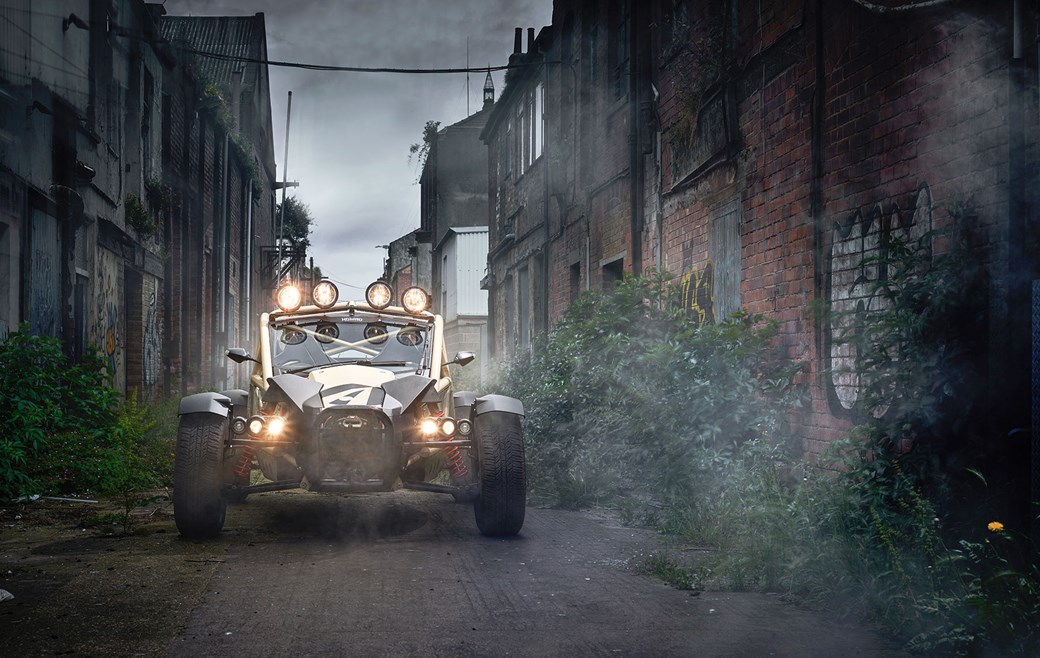
The Ariel Atom is eccentric yes, but at least it has a clear purpose: continuing that long tradition of lightweight British sportscars, it belongs on a track or a winding B road, and its function is to slice through brain cobwebs like a Spartan sushi knife.
The Ariel Nomad, on the other hand… well, the Nomad makes even the Atom look reserved. This is a car with no clear purpose. It’s an off-roader, sort of – though I doubt many buyers actually take it on the gravel.
Instead, it’s more like an imaginary dune buggy for the road; a muscled-up sand-rail; an ’80s Tamiya radio-control, made flesh; a Desert Storm Fast Attack Vehicle minus the .50 calibre machine gun. It’s a ridiculous figment of so many schoolboy dreams, manufactured in Somerset. Just standing next to it releases some kind of endorphin in your brain. Everyone stares at it.
But that isn’t the only reason I’d choose the Nomad to burn the last gallon of fuel on Earth. When you climb in – gripping the pipe that arches over the ‘door’, feet on seat, swinging in like an athlete on gym apparatus – you plop down into a hard plastic seat.
The interior is busier than the Atom’s, with more pipes curving around you and a flat windscreen ahead, but it shares its meticulous austerity: not a nut or a wire more than is necessary, and beautifully finished. The dash is from the Atom 3.5, so it’s more haphazard, less ‘styled’ than the wonderfully updated Atom 4, but it suits the military Nomad.
The gearstick is short, finished with a lozenge of polished alloy, and this example has also been fitted with a fly-off handbrake – a tall black handle that rises out of the floor almost up to the steering wheel. It acts like a bicycle brake on the rear wheels – pull to skid. This is a cockpit for driving and nothing else.
But that isn’t the only reason I’d choose the Nomad to burn the last gallon of fuel on Earth. Start the engine with a rubberised black button and your seat buzzes with vibration. While all recent Atoms have used 2.0-litre Honda engines, the Nomad is fitted with 2.4-litre from a US-spec Civic. It puts out 180kW and 300Nm of torque. Ariel offers a supercharger upgrade, which takes it up to around 220kW, but our example is naturally aspirated.
Loaded with options like the winch, spare wheel and roof lights, this car weighs more than the 670kg basic weight; which in turn means it’ll be slower than the claimed 0-100 time of 3.4sec. But let’s not quibble – this is still a seriously rapid car, if not a lightning flash like the 238kW Atom 4.
But that isn’t the only reason I’d choose the Nomad to burn the last litre of fuel on Earth. The real character of the Nomad is in its gait. Sitting tall on Eibach coil springs and rolling around on those huge all-terrain tyres, it’s a totally different beast to the Atom – instead of being razor sharp and tightly pinned, it moves around a lot on its squishy suspension.
Brake into a corner and you see the nose squat relative to the wheels, then rise again as you accelerate away. This dive and lift is matched by lateral movement in the corners, as the tyre tread squirms. At first, this is unnerving – it feels like you’ve got a flat tyre or a couple of loose bolts. You have to build confidence to start enjoying this floatiness and remind yourself: it’s not an Atom, so stop driving it like an Atom. Instead, go big, go bold, go lairy: chuck it into a corner and lift off the throttle, knowing the dive will load up the front tyres, loosen the rear and trigger big lift-off oversteer.
And that’s the real reason I’d choose the Nomad to burn the last litre of fuel on Earth – because if we are going to have to kiss goodbye to petrol-engined cars, you might as well pick the most stupid, pointless one you can find – and go out with a laugh.
Steve Moody on the Renault 5 GT Turbo
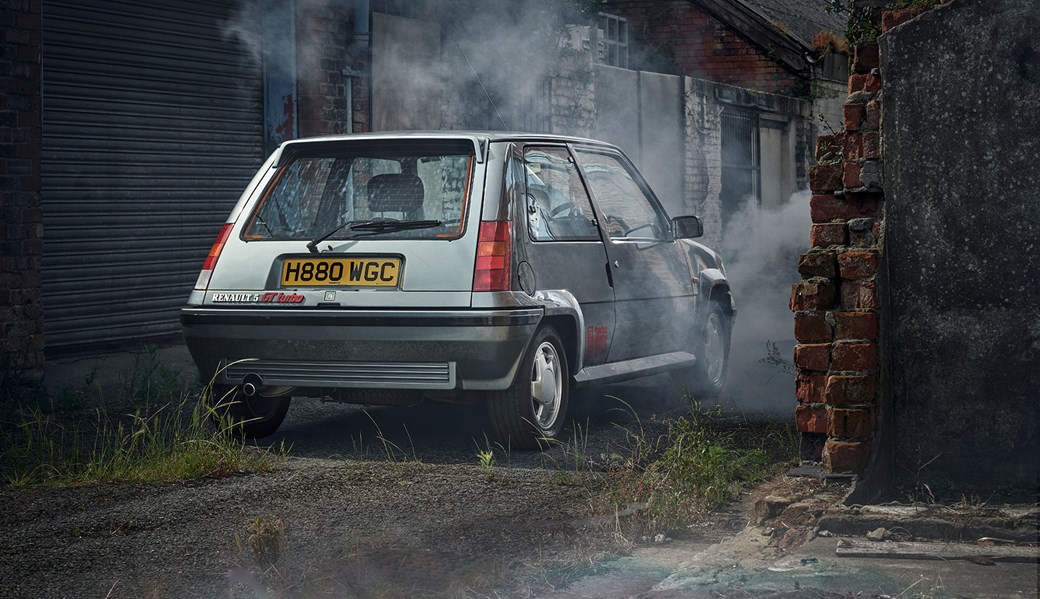
Nearly 30 years later, my last litre will be spent much as the first was, hedges flashing by, empty lanes and youthful optimism, a little Renault engine spinning itself into a frenzy.
There is nothing like that first journey in your first car. I remember laid out ahead the sprawling possibilities of trips, freedom, adventure, that my Renault 5 Campus, an unsophisticated little tin box with no headrests, clock or revcounter, presented. I drove the long way home from the test centre at a lick, or what passed for lick in a 30kW, four-speed car, down winding country lanes. I just missed a horse float.
Of course, there will always be first cars, but the experience will be so much more procedural in the digital, plastic-boxed and satellite-tracked age, tethered to charging cables, travel patterns downloaded to apps, behaviour reported to insurance databases. That’s not exploration and learning. That’s going there and back. Efficiently.
They won’t flood the engine outside the rugby club disco at 2am, attempt to drive to the coast, but get lost and end up... somewhere. The clutch cable won’t snap on your way to school, the engine overheat in a queue coming home from the beach, or the speedo stop working (and, handily, the odometer too).
For the last indulgence, I get to dredge back up all that unfettered independence and chaos of my teenage days, but turn up the boost. Literally. The car I really wanted was the Renault 5 GT Turbo, and my friend had one. It was the first car I was ever shocked by: the brutal speed as the turbo punched us into the future, or a wall.
Now, the GT Turbo’s acceleration seems less devastating. But as it warms, the little tyres glue up, giving the wonderful steering even more texture, and the rudimentary Garrett turbo starts to deliver that 100kW whoosh.
Kept wound up between surprisingly long gears, it covers ground quickly, silkily, smelling oily-sweet as it burns those last precious drops, a manic mouse, my face glassy-eyed and grinning. It ends as it began. But actually, in the Turbo, even more gloriously.
Ben Pulman on the Porsche 911 GT3 RS 4.0
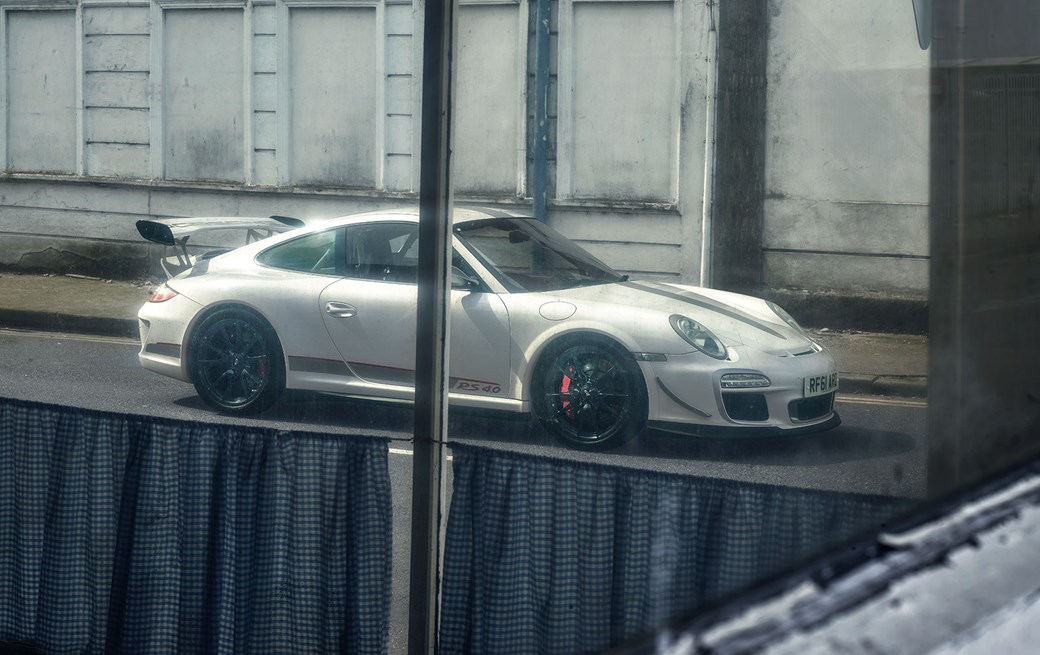
Those final klicks with that final litre of fuel will be crushingly emotional. There will, no doubt, be a phase of crying at the side of the road. But before then comes another, crucial phase. This is the phase when I have to decide what the correct car would be – a decision more important than choosing the right name for my first child.
A manual gearbox, hydraulic steering and delivery to the French Alps on the back of Elon Musk’s new semi are must-haves. Using an electric Tesla truck for the DHL duties is all about saving as much fuel as possible for the main event: the naturally-aspirated engine.
Shortlisted were AMG’s 6.2-litre V8, after a memorable night in a Merc C63 Black Series on the Pacific Coast Highway, and the LFA’s V10 that I can still hear wailing on the Route Napoleon. But given carte blanche, the revered 4.0 RS 911 is my choice.
The carbon bonnet and front wings came from that era’s 997 GT2 RS. With the subsequent switch to PDK it would become the last manual RS. But most important of all was the enlarged 3996cc flat-six. Effectively pinched from the 911 RSR racer, crankshaft and all, it was the final hurrah for the Mezger, an engine with real motorsport pedigree (including a outright win at Le Mans in ’98).
It does not disappoint. It idles unevenly, impatiently, but higher revs harmonise the six cylinders and hint at how this engine should be used. Go for it, and the response is instant, the performance still so strong, the hard-edged howl evocative of days (and nights) spent at Le Mans and the Nürburgring, watching 911s at full chat.
Then there’s the manual ’box. Shared across all 997 911 GT3s, it is stubborn, but I love it. Each gearchange, be it up or – with an accompanying blip – down, brings back memories of our Sports Car Giant Test at Cadwell Park in a gen-one GT3 RS, taking a gen-two GT3 across the Alps one winter, and a summer’s evening after leaving the office spent in a gen-two GT3 RS.
The 4.0 feels narrow, the view out beyond the grey revcounter just perfect. The nose bobbles, the hydraulic steering moves delicately between your fingertips, and the engine lets you know exactly where it is, three bewitching sensations Porsche has now all but dialled out of the 911.
What a car. What a fabulous car.
James Taylor on the racing kart he built with his father
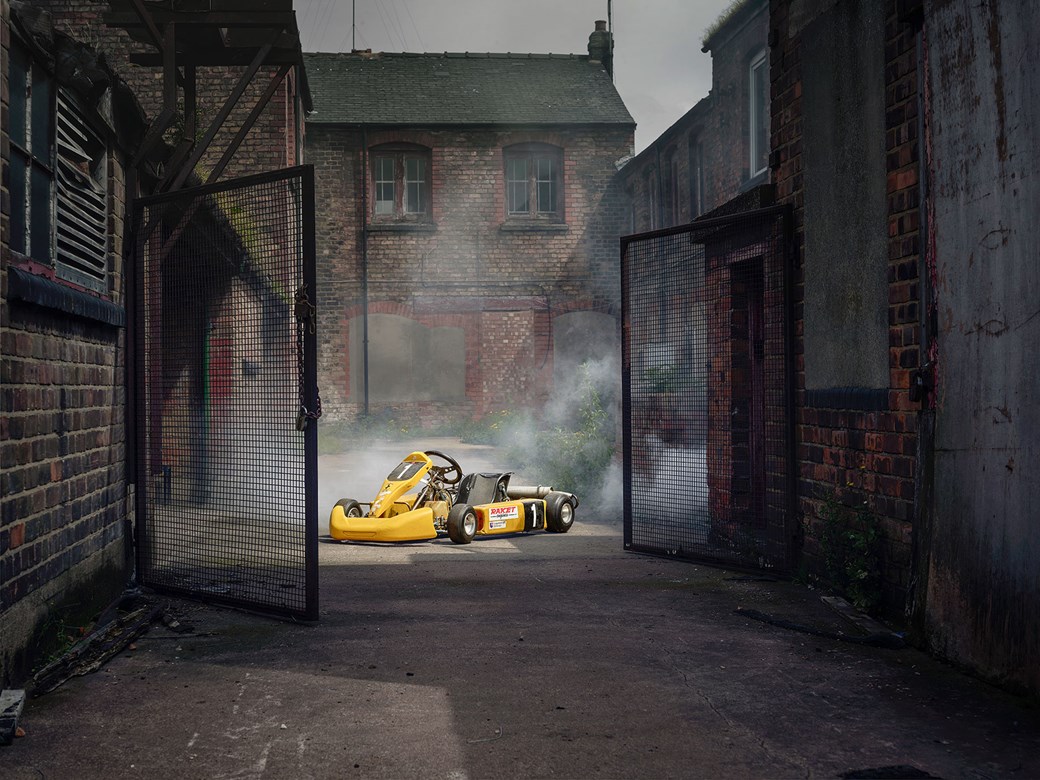
For a while, I could carry this whole kart around in my pocket. It began at an after-school club held in the metalwork block. The aim? To build a kart from scratch and then race it to glory, a notion too exciting to be true. And for a long time, it was; after weeks of toil, I’d succeeded only in building two small brackets to carry the front stub-axles. Hence the pocket-portability. Had my dad not stepped in to help me, I’d still be building it now.
We started it when I was 11. We had only a couple of hours a week available to work on it, no drawings to work from, and it really was a from-scratch project. The chassis was a bunch of steel tubes to be cut, bent and brazed together, and we made practically everything by hand: steering column, floor, engine mounts, pedals... Finishing it seemed an impossible dream.
And then, the day after my 14th birthday, it was suddenly a reality. A herculean effort by my dad had got the kart running and that first drive, all 60 seconds or so of it, in a circle in the cul de sac outside our house until the engine stalled, is still one of the most exciting drives of my life.
Then we were racing for real, in the National Schools Karting Association series, kart perched on an old box trailer behind our Peugeot estate. We went as far south as Camberley in Surrey, as far west as Glan-y-Gors in Conwy, and as far north as the extraordinary Rowrah circuit in the Lake District. Imagine somebody shrunk Spa and put it in a quarry in Cumbria – for me, Rowrah’s up there with the Nürburgring for the title of world’s best track.
It was a family effort. My dad was chief engineer, my mum chief co-ordinator, my sister Hannah initially an enforced drag-along-ee, and then a driver too. Since the kart used a Honda C90 motorbike engine (three gears, auto clutch), it could be raced in two different classes; in one you were allowed to shift gears, in the other it was locked in gear. My dad engineered some ingenious quick-release pedal extensions so that Hannah could race in one class, me in the other. Between us we won scores of races and meetings, including a couple of national sprint titles.
We were already a close-knit family: the karting didn’t so much bring us closer together as embody the closeness we already had. My dad was a design engineer, and racing with him showed me just how talented he was.
Not just in making the kart in the first place (looking at it now, I understand anew just how epic a job it was), but in the way he could make it faster, and explain it to me in a way I could understand. I learned so much, and driving was only part of it. But it was the most thrilling part. The balancing act of a four-wheel drift, the heartrate-spike of an out-braking move, the crushing low of not finishing a race, cancelled out by the lasting europhia of a win. Thankfully I realised how lucky I was at the time.
My dad was taken from the world three years ago but the kart is still here. I’ll never part with it. If, as I worked on those brackets all those years ago, you’d told me that one day the kart would be photographed with a Jaguar D-type in CAR, I’d have been both proud and puzzled.
But there’s no other vehicle here I’d rather put my last litre of fuel into, for as many laps of Rowrah as we could manage, each lap winding the clock back and brushing fresh colour onto memories that will never fade.
Chris Chilton on the VW XL1
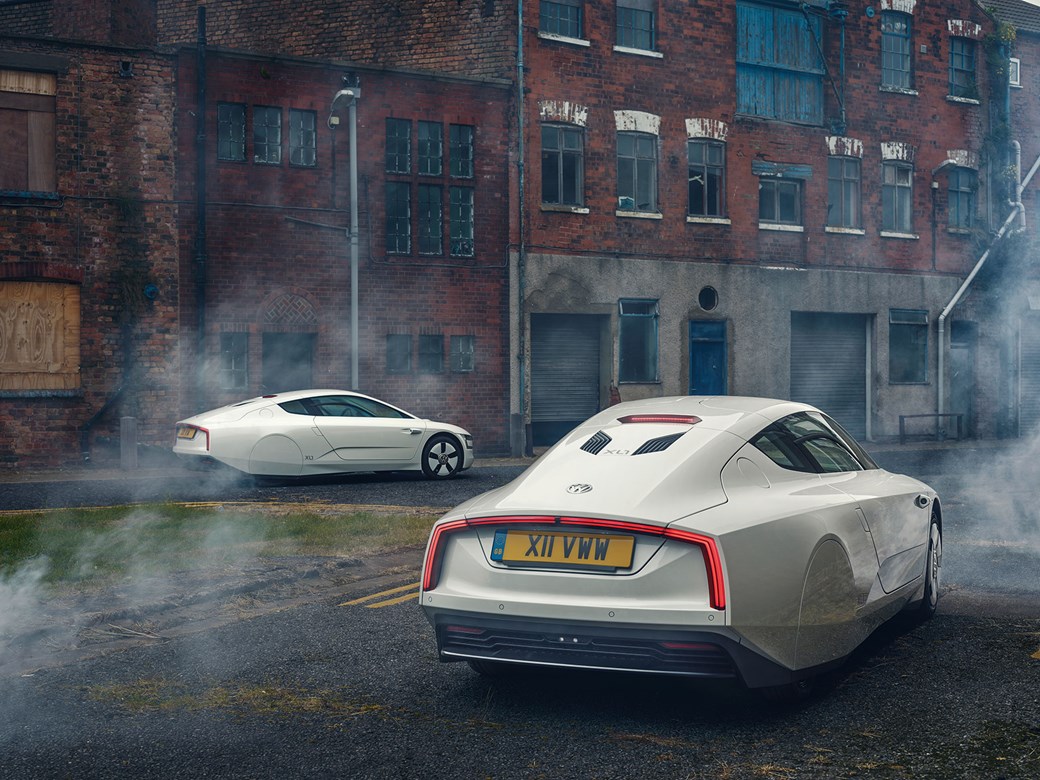
The options raced past my eyes like the fruit on a slot-machine drum. Maybe I’d fuel half a dozen passes down the drag strip in Dick Landy’s wheelying' 65 Dodge Coronet. Pull off one flying lap of VW’s Ehra Lessien test track in a Bugatti Chiron.
Maybe I’d hook up with Markku Alén and ride shotgun as he went maximum attack on a section of the Tour de Corse in a Lancia 037, because that’d be almost as much fun as doing it badly myself. I could have picked any of those. Instead, I picked a diesel hybrid.
Not just any diesel hybrid, though, but Volkswagen’s incredible XL1, so named for its ability to travel 100km on one litre of fuel. VW imported 26 into the UK for Brits who paid more than $200,000 for the privilege. At that price, if you bought one to save money on the commute, there really wouldn’t be any oil left by the time it had washed its face. But the fact remains, this is the most frugal car ever put into production.
Yeah, I know, choosing the most frugal car on the planet to make your last litre last longer sounds as misguided as watering down the world’s last schooner of beer 10 times over to make it do the same. Better to enjoy the pure hit and, forever after, the memory of it, right?
But there’s one very good reason why I chose it. I want to split my litre in two. Driving solo is fun, but the real thrill is always in the chase, so I’d share my gallon with a friend and duel to the death. Which, given how frugal the XL1 is, might take a while, even with only half a litre in the tank.
And that’s because the XL1 was built with the single-minded focus we normally only see in the craziest supercars, and much of their tech, too, only repurposed to maximise efficiency. It features a carbon chassis, ceramic brakes and gullwing doors. It looks like the love child of a Citroën SM and McLaren Speedtail, shrunk to 2:3 scale.
The XL1 is tiny. Shorter than a Polo and further from the sun than a Ferrari. It weighs just 795kg. And it’s huge fun to drive. That part I wasn’t expecting. The unassisted steering feels unfashionably heavy – and unfashionably communicative. Driving one is a physical experience, but the feel and accuracy of the front end keys you into corners like no other fuel-sipper, and quite a few supposed sports cars I’ve driven. The puny 115mm front tyres don’t flop onto their sidewalls on corner entry and, because 55 per cent of its mass sits over the real wheels, the XL1 barely needs to slow for bends.
Which is good, because you really want to maintain momentum in the XL1. First, because the carbon brakes are difficult to modulate, and second, because there are scooters with more poke. Power comes from a combination of a 5.5kWh plug-in battery and 27bhp electric motor, which has a range of up to 50km. But not how we’re planning to drive it, it doesn’t.
At higher loads and speeds the tiny 800cc, 35kW diesel – half a Golf TDI’s 1.6 – takes over, but push the throttle down hard beyond the detent and the two power units team up to provide a combined 50kW and 103lb ft of torque.
The XL1 isn’t fast, but it’s fun to extract what performance there is. Top speed is limited to 160km/h, and 0-100km/h takes 12.9sec. The crazy 0.186 Cd factor means the XL1 requires just 5kW to cruise at 100km/h. Accelerating through the gears, you surf a wave of low-rev torque that gives you a satisfying tap on the shoulder.
There’s no manual mode for the DSG transmission, so for my hypothetical duel I’d just mash the pedal and go, hope to be ahead by the first corner, and then keep my eye on the not very good camera-based side mirrors (tech that only just made it to Audi’s e-Tron) and be prepared for any attacks from behind.
And I’d flip the bird to Moody, Smith and Walton as I passed them, parched at the side of the road.
What would you drive for the last litre of fuel? Sound off in the comments below
This article first appeared on our sister site Car Magazine UK
COMMENTS